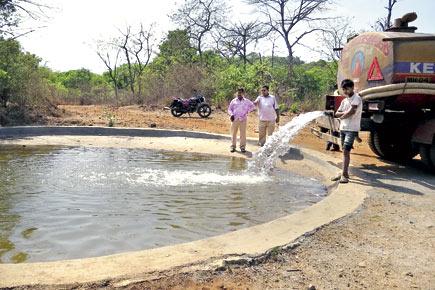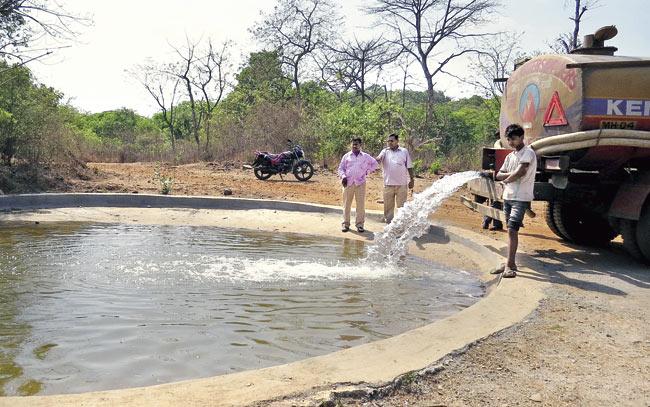Sanjay Gandhi National Park authorities have started filling up 20 new watering holes that they had dug earlier, so that animals and birds are never far away from a drink

Leopards, wild boars, deer, civets and other inmates of Sanjay Gandhi National Park (SGNP) can now celebrate with a drink. This summer, there won’t be a shortage of water at the 104 sq km park.
ADVERTISEMENT

Tankers have been deployed to release at least 10,000 litres of water each week
With natural streams mostly dying up between January and June, SGNP officials, who wanted to make sure there are no thirsty animals, have dug 20 artificial watering holes across the forest. The staff is now busy filling up these ponds from time to time and keeping a watch on the water levels every night.
Authorities are confident that there are enough artificial ponds in each area including Krushnagiri Upvan, Tulsi Range and Yeoor Range. In each range there are six or seven of these artificial watering holes, where water is released once summer arrives.
After December, the natural streams often start drying up. The situation becomes worse after March, when, faced with dry watering holes, the big cats often stray into human settlements inside the park. Speaking to sunday mid-day, a senior SGNP official said the green forest cover starts drying up from November and by May, and that several areas of the forest become extremely hot due to the lack of green cover.
This continues till June-end, when with the onset of monsoons, streams get filled up. When contacted, SGNP director and chief conservator of forest, Vikas Gupta said, “During summer the wild animals, birds and reptiles face a drinking water problem as natural sources in the forest start drying up. We have deployed tankers to release at least 10,000 litres of water each week.”
Sunday mid-day accompanied one such tanker to the Krishnagiri Upvan Range where around 15,000 litres of water were released into artificial ponds roughly 30 feet by 20 feet in size. “Our patrolling team keeps visiting these locations every day to check the water level,” said a forest guard from Krushnagiri Upvan Range. The authorities have also fixed cameras near these locations to keep a tab on the activity of the animals.
 Subscribe today by clicking the link and stay updated with the latest news!" Click here!
Subscribe today by clicking the link and stay updated with the latest news!" Click here!






